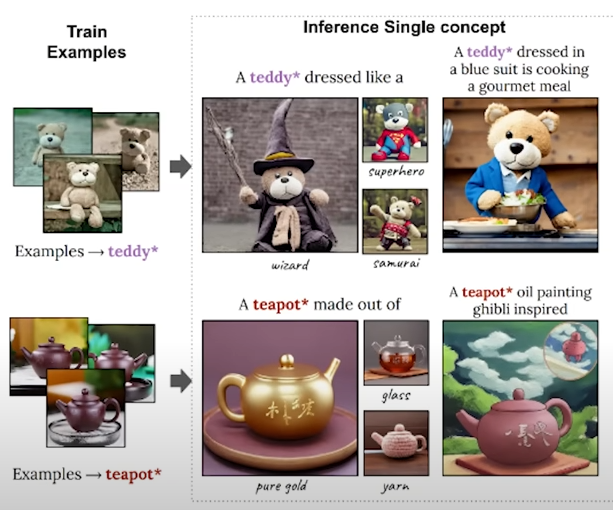
In the rapidly changing landscape of artificial intelligence (AI), one of the undisputed trailblazers is Nvidia. Renowned for consistently pushing the frontiers of technology, Nvidia has once again brought forth a pioneering advancement.
Their latest offering, the ‘AI Perfusion’ model, represents a significant leap in the Artificial Intelligence realm. This innovative technology is a beacon of Nvidia’s commitment to harness the transformative power of Artificial Intelligence, shaping a future with highly personalized, engaging, and dynamic user experiences across various sectors.
Delving into Nvidia’s Artificial Intelligence Perfusion
With the ‘Perfusion’ model, Nvidia is rewriting the rules of image generation and manipulation. This cutting-edge technology offers a nuanced approach that couples impressive detail with personalized outputs. It effectively maintains the essence of the original input while granting users an unparalleled level of influence over modifications, painting an exciting picture of what the future of Artificial Intelligence image generation may entail.
The Intricacies of One-Shot Personalization
Nvidia’s ‘Perfusion’ model is built around a key concept – one-shot personalization. This technique empowers users with a degree of control and flexibility that transcends conventional norms in AI image manipulation. By leveraging a single image input, the model can generate a spectrum of modifications, each maintaining the core attributes of the original image. This capability to accurately reflect user intent while preserving image consistency is a landmark development in the field of Artificial Intelligence, redefining the notion of game-changing.
How AI Perfusion Stands Above its Peers
When pitted against other models operating within the same technological domain, the Perfusion model’s exceptional prowess becomes evident. The outputs derived from similar user inputs exhibit stark differences, with AI Perfusion consistently producing superior results in terms of quality and true-to-source representation. It adeptly tackles the challenges where other models often stumble, cementing Nvidia’s dominance in the sphere of AI technology.
Defying Boundaries in AI Image Generation

Nvidia’s AI Perfusion unequivocally leads the pack in the arena of AI image generation, consistently delivering precise and high-quality outputs. This, coupled with its inherent adaptability and user-controlled flexibility, heralds the dawn of a new era in Artificial Intelligence image generation. The buzz around this revolutionary technology is palpable, with tech enthusiasts eagerly discussing it and eagerly awaiting its showcase at Nvidia’s imminent events.
The Integration of AI Perfusion into Nvidia Castle
Nvidia’s ambitious plan to integrate Perfusion into their Nvidia Castle platform signals the onset of an exhilarating chapter in AI image generation. This strategic incorporation is expected to expedite the deployment of Perfusion across a diverse range of applications, underlining the technology’s wide-ranging potential. Nvidia’s proposed allowance for multiple companies and software platforms to leverage their Picasso cloud service can only serve to amplify the impact of this transformative technology, underscoring its position as a significant development to monitor closely.

The Potential Future Implications of AI Perfusion
AI Perfusion carries immense potential for a plethora of applications. From enabling more realistic and life-like video calls to generating stunning 3D representations from a single 2D image, the possible uses of this technology are vast. Its potential extends beyond merely reshaping communication and interaction in the virtual realm. The technology’s transformative capabilities, coupled with its propensity to break new ground in Artificially Intelligent image generation, make it a cornerstone in the future evolution of digital experiences.
In comparison with other models Perfusion AI can enable more animate results. In the photo below you will the the difference.

Conclusion
Nvidia’s ‘AI Perfusion’ is a shining exemplar of what the future holds for Artificial Intelligence. The model signifies a departure from traditional Artificial Intelligence image generation techniques, offering unprecedented levels of control, accuracy, and personalization. As it continues to evolve at an exponential pace, it is groundbreaking innovations such as Perfusion that are laying the groundwork for the future. This novel technology reflects Nvidia’s relentless pursuit of innovation and their steadfast dedication to pushing technological boundaries, marking a pivotal milestone in the quest for more personalized, engaging, and immersive digital experiences.
Note: The views and opinions expressed by the author, or any people mentioned in this article, are for informational purposes only, and they do not constitute financial, investment, or other advice.
Relevant Articles:
Hugging Face: The Emoji That Sparked a ML Revolution
OpenAI playground vs ChatGPT: Which One is Better for Use
OpenAI’s Sam Altman Testifies in Congress: Is ChatGPT Harmful?

